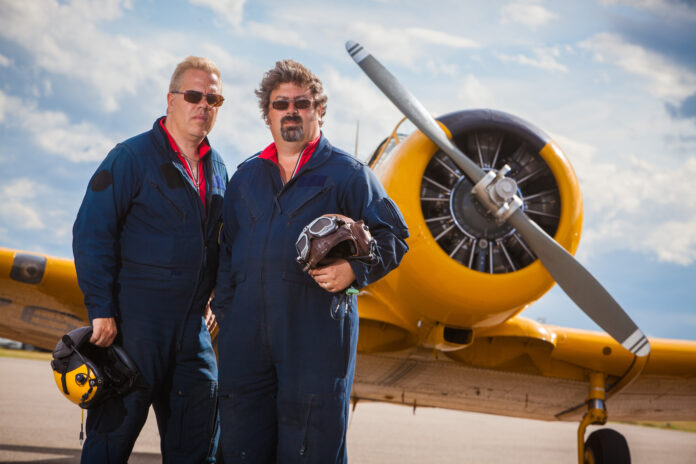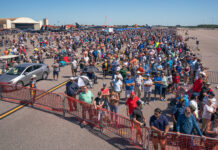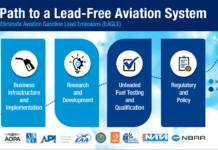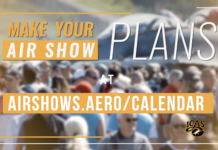For Yellow Thunder’s David and Drew Watson, a successful Yellow Thunder performance is one that entertains the crowd, keeps the action constant and maintains the highest-levels of safety. For the past nine years, the brothers have performed formation aerobatics in two yellow Canadian Harvards at air shows across Canada and parts of the United States.
Along with the crowd-pleasing roar of two Harvards and plenty of smoke, the team performs its formation aerobatic maneuvers as well as solo performances in day shows, low shows and mock air races. And this year, the team has added a new night act to its show arsenal, as well.
“I would say that our goal is to entertain the crowd with an older style machine and a difficulty of flying and managing the airplane,” Drew said. “We have striven from day one to make it entertaining, make sure that there is an airplane in front of the crowd at all times, and make our performance extremely safe. Those are the three pillars of our founding.”
According to both David and Drew, their initial inspiration for flying came from their father’s love of flying the Harvard at air shows in Canada.

“I was inspired really when [my dad] got his plane. First he got the Chipmunk in 1978, and then the Harvard in ’81. Drew and I were both kids and absolutely loved the flying part and the comradery that our dad and his friends had whenever we went somewhere. And usually that was at an air show with only a few exceptions,” David said.
It was through these experiences of flying to air shows with their dad that led both brothers to ultimately obtain their pilots license and their own Harvards…David purchasing their father’s Harvard MK 4 and Drew purchasing a Harvard MK IIB from one of their father’s colleagues.
“You can tell that they are [both] Harvards as opposed to American T-6’s by the fact that there is that heater pipe down the side,” David added. “It was a Canadian modification.”
“By 2020, both machines will be IFR, which will reduce the likelihood of being stuck in weather,” Drew said. “Getting to the air show is part of the problem. So, we are trying to reduce the risk for the event organizer to have to scramble to either find another act or fill in the gap. And we are really looking forward to doing some night shows.”








